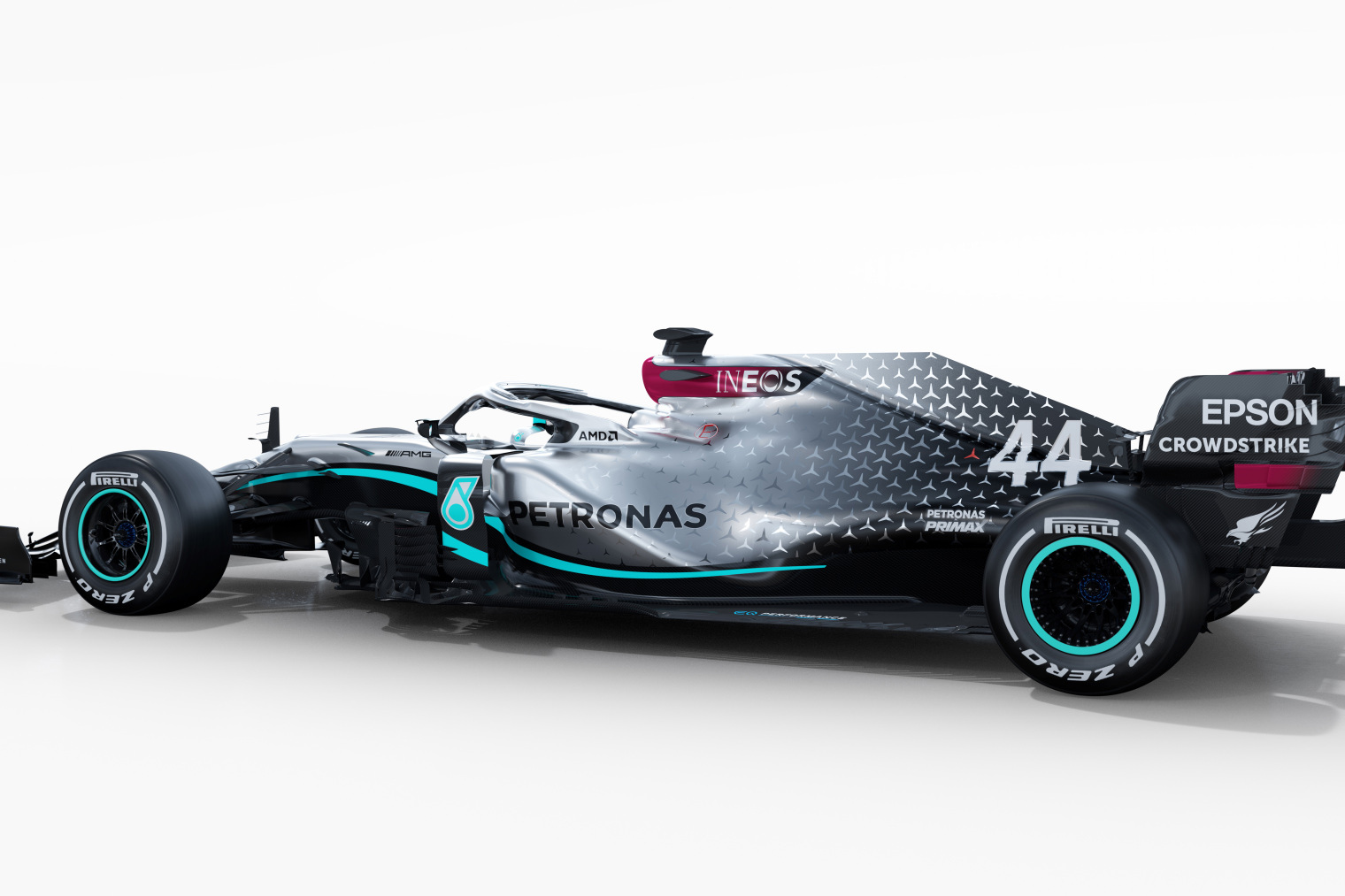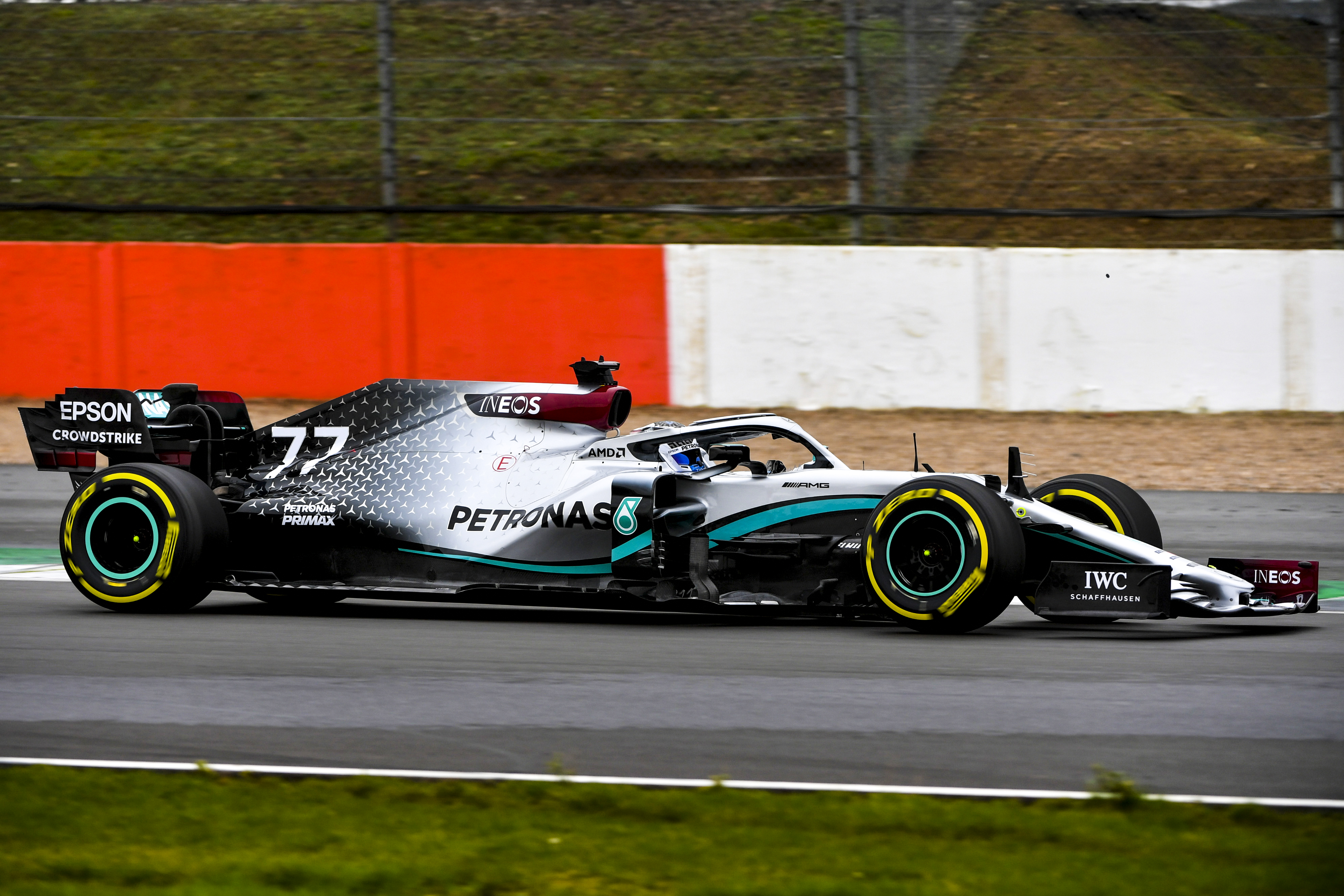Up Next

We – and everyone else for that matter – keep saying that with the Formula 1 regulations staying more or less the same as 2019 there will be very little room for Mercedes to move forward. But looking at the W11 that might not be true.
Consider that for the last six seasons Mercedes ran what could be called a conventional race car, with none of that high rake stuff or fancy radiator intake areas, just a sensible, well understood, well designed and well executed car. It brought the team six consecutive drivers’ and constructors’ championship titles.
You have to wonder what Mercedes could achieve if it got more adventurous. But now the car is here, the first impressions are that it’s another Mercedes in this line – well detailed and very much fit for purpose.
Last year it started with a basic car before bringing the ‘real’ aero package to the second test. It’s ruled out repeating that strategy in 2020, but there will still be upgrades to come before Melbourne. You can only talk about what you can see and there is plenty to learn from what was unveiled on Friday.
The front wing, as you would expect, is very similar to the end-of-season version from last year. It has that small slot gap in what you can call the inboard end of the fourth flap, meaning that you can’t have as long and/or swoopy an inner end to the fifth flap (the rules only allow five flap sections longitudinally).

These are all just details in how you manage the airflow coming off the inner end of the flaps. Swooping them downwards is similar to an aeroplane wing outboard end where it sweeps upwards, it acts as an endplate and dissipates the pressure differential between the upper and lower surfaces. This means the wing will work harder and not have so much dirty and turbulent airflow coming off the inboard end, which will affect the rest of the car.
The nose is as last year with its spoon front and bib section. The leading edge of this bib section looks like it could be a bit higher, or at least more pronounced, but there’s none of the flash nose detail like we have seen on the Red Bull.
The front suspension is what we might call conventional as it has a top and bottom wishbone, a pushrod and a trackrod but that’s where conventional ends.
The pushrod is very short and connects to the upright a long way away from the front suspension upper and lower wishbone axis.
This means quite a change in ride height with increased steering lock. Everyone is doing this but I think this is potentially the most effective I have seen.
This could be a tell-tale sign that Mercedes is still not pursuing the high rake philosophy that most others, especially Red Bull and Ferrari, have bought into
It also allows you to alter the diagonal weight transfer with steering lock, which is something that can help with traction coming off the corner.
Mercedes has always had a very narrow inboard base to the lower wishbone. It retains this for 2020 as it gives more space to manage the aerodynamic flow coming out from underneath the chassis before the leading edge of the sidepod bargeboard area.
Technical director James Allison has commented that Mercedes has ‘stiffened’ up the front suspension in the upright, wheel bearing and wheel area. Obviously if things are moving around a little it is not ideal and a redesign is the best way as opposed to just adding weight to what was already there.
The bargeboard area, although very difficult to see in detail, looks like it has the usual Mercedes multitude of turning vanes. With the regulations as they currently are this area is the one that is left open to the most innovation. Because of that it is an area that Mercedes has exploited to the maximum over the last few years.

You can also get very good bang for your buck from here. These components and how they manage the airflow both in front of them and behind them influence the overall car’s aerodynamic performance by something like 25%, so they are critical parts.
The leading edge of the sidepod shows that like most other teams Mercedes has dropped the top side impact tube to its lowest level. This allows the radiator intake to be further rearward, meaning there is more room for the wake coming off the front wing to be influenced by the sidepod leading edge undercut. Getting these two talking to each other is again an aerodynamic benefit in all areas.
The sidepods after the intake area sweep down dramatically. You could call this a bit of a cling-film car – basically build up all the internal mechanical parts and wrap it as closely as possible. Everyone is doing this now so it will be interesting to see when we get to a scorcher of a race who has really allowed for the required cooling.
The airbox intake is fairly brutal. It’s basically just a rectangular hole with the triangular rollover bar structure separating the intake into three distinct ducts – one for the turbo and for the other two… well your guess is as good as mine.
It has a decent undercut at the bottom of it to manage the airflow coming off the driver’s helmet and the front face of it is sloped forward to the top. This means that any airflow spillage when the air intake blocks off will spill out of the bottom surface and be managed by this undercut section.
The floor slots in front of the rear tyres look like they are all at an angle. Others have longer slots in line with the floor’s outer edge.
This could be a tell-tale sign that Mercedes is still not pursuing the high rake philosophy that most others, especially Red Bull and Ferrari, have bought into. Introducing this philosophy is not just as simple as raising the rear ride height, it requires a complete aero rethink to get the airflow to act as a sealing device for the larger floor gap.
The rear end detail is again, as with every other 2020 car we have so far seen, as compact as is practical. Again, it will be interesting to see whose size zero rear end is perhaps size minus zero and needs some attention before they can achieve adequate cooling.

Allison highlighted the presence of an all new rear suspension layout. It still retains a top rear wishbone and the only thing I can see of note from the images released so far is that the pullrod seems to go into the underneath of the gearbox to the spring and damper units at more of a 90-degree angle. On the Red Bull it goes in a long way forward but there is more than one way to achieve a compact rear end.
The rear wing assembly is just one of the many variations that we will see over the season from Mercedes. The wing endplates have the now-customary vertical turning vanes on the lower edge where the upper wider and lower narrower part meet up.
Interestingly, on the Mercedes version there are not as many as on the McLaren version. Normally with the bargeboard assembly Mercedes rules the roost as far as part count is concerned, so I’m surprised this area doesn’t follow suit.
Now for the million dollar question: what’s my verdict? Well, I think I expected more.
In my opinion Red Bull and Ferrari have dug deeper but what you see is one thing, it’s performance on the track can be another. Mercedes knows how to get the best out of its car so there’s every chance it will be as quick as it always is.
Hopefully what I am saying is right and that we can have a real three-team (at least) tussle at the front for the championship.
As we know from testing last year it will really be the first race before we know who has got it right, but if we can get at least the top six cars on the grid within a couples of tenths and a race that we don’t know the winner of until the chequered flag is thrown then we will all be happy.
Well, perhaps with the exception of Mercedes.




